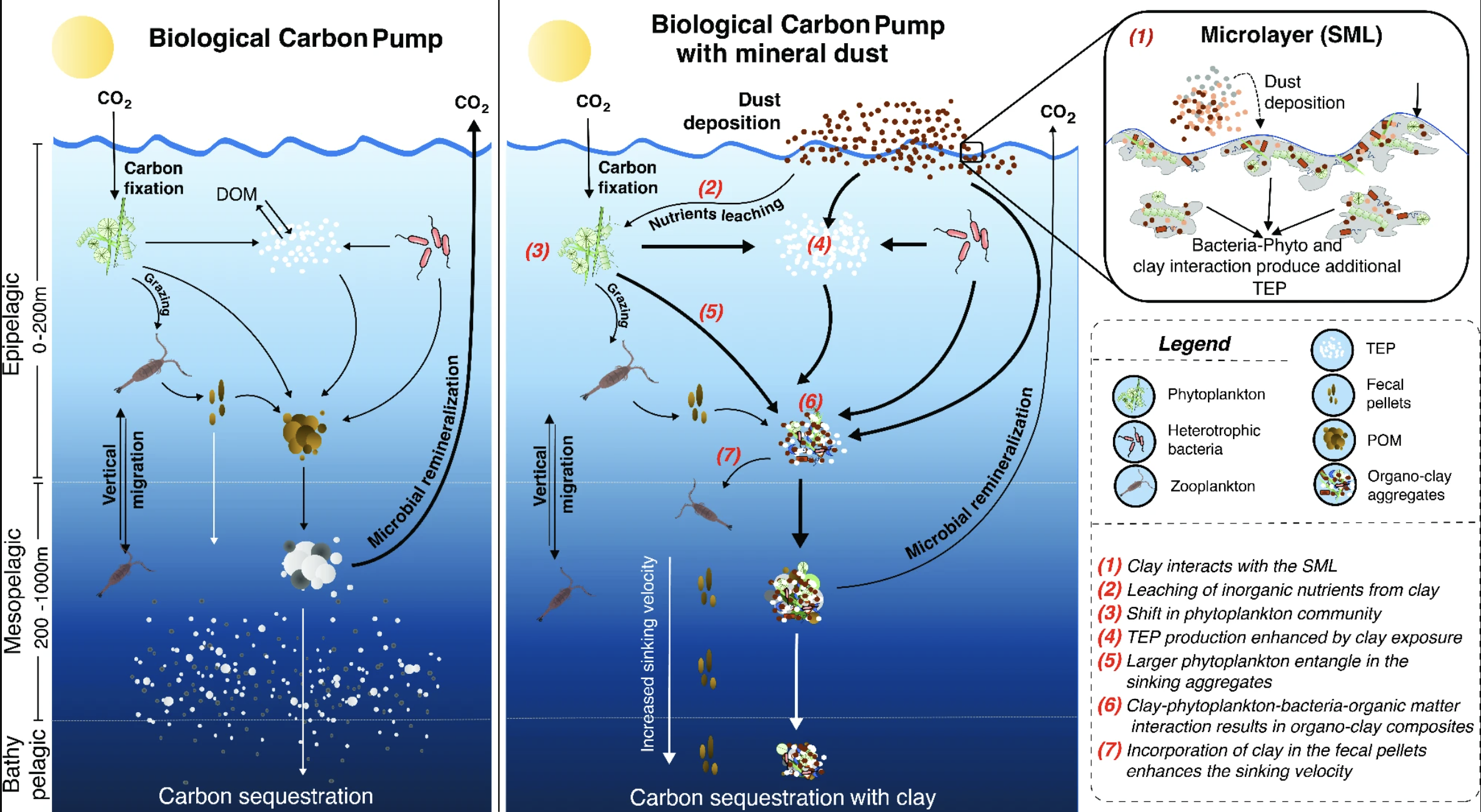Nutrient-OMICS coupling approach reveals unexpected actors for atmospheric carbon sequestration
While the stimulation of the primary production by atmospheric dust deposits is known for years, interaction between minerals and marine microorganisms is still not well understood. Sharma and colleagues (2024, see reference below) investigated the role of clay minerals in strengthening the marine biological pump.
Using microcosm devices, unfiltered and filtered seawater were sprayed with clay (20 mg L− 1 and 60 mg L− 1) and incubated. All clay treatments led to a tenfold increase in TEP (Transparent Exopolymer Particles) concentration. Associating OMIC tools with the analysis of nutrients and micronutrients released from clays during their experiments, the authors further demonstrate that deposition of continental mineral dust associated clay minerals at the sea surface recruits the heterotrophic bacteria to produce more TEP and trigger a pathway that strengthens the biological carbon pump by (a) converting buoyant dissolved organic matter into settling organoclay flocs, (b) forming and sinking of phytoplankton aggregates in bloom, and (c) mineral ballasting, thereby increasing the mean depth of respiration of particulate organic matter. Moreover, ingestion of organoclay flocs by microzooplankton repackages clay with carbon resulting in fecal pellets with enhanced settling rates.
As there is strong attenuation of particulate organic carbon in the euphotic zone, these results suggest that it is clay minerals (not a solution of iron sulfate, as done in iron fertilization experiments!) whose deposition on sea surface likely increased the carbon export efficiency.

Reference:
Sharma, D., Menon, V. G., Desai, M., Niu, D., Bates, E., Kandel, A., Zinser, E. R., Fields, D. M., O’Toole, G. A., & Sharma, M. (2024). Organoclay flocculation as a pathway to export carbon from the sea surface. Scientific Reports, 14. Access the paper: 10.1038/s41598-024-79912-z
